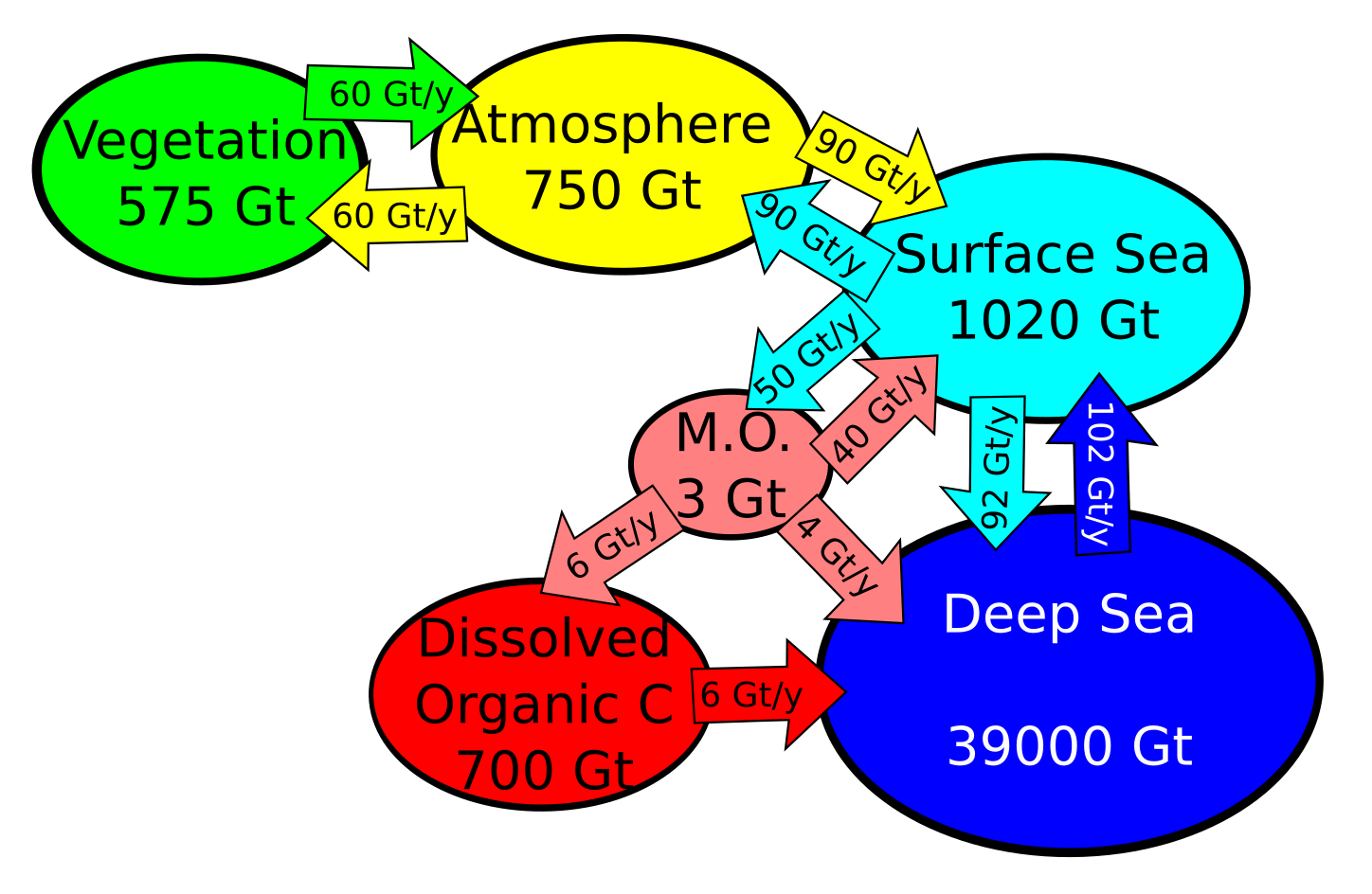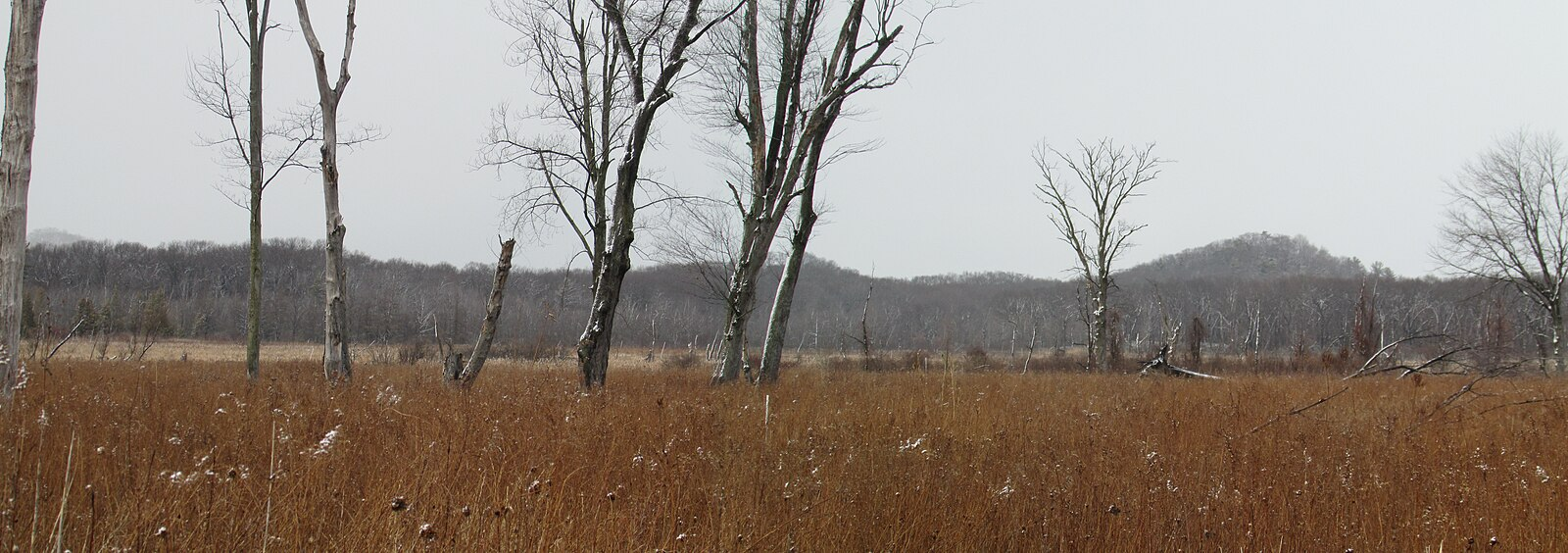IB Syllabus focus:
‘Cycles keep elements available; human disruption threatens sustainability. Stores are in equilibrium; sinks accumulate; sources release.’
Ecosystems rely on continuous cycles of matter that maintain balance in nature. These cycles move nutrients and elements between organisms and the environment, sustaining life on Earth.
Understanding Cycles in Ecosystems
Ecological cycles describe the repeated movement of elements like carbon, nitrogen, and water through biotic and abiotic systems. They ensure that essential resources remain available for organisms, supporting productivity and ecosystem stability.
Cycles are essential because they:
Maintain nutrient availability.
Connect living organisms to their physical environment.
Prevent depletion of finite resources.
Allow ecosystems to adapt to environmental change.
Stores: Reservoirs of Materials
Stores are natural reservoirs where elements remain for extended periods. These can exist in either equilibrium or fluctuation depending on external influences.
Store: A place where matter or energy is accumulated and held within a system, either short-term or long-term.
Examples of stores include:
Atmosphere: Holds gases like carbon dioxide and nitrogen.
Soils: Store nutrients such as nitrates, phosphates, and organic matter.
Biomass: Plants and animals hold nutrients as part of living tissue.
Oceans: Store vast amounts of dissolved carbon and minerals.
Stores are vital because they act as stabilisers within cycles, maintaining balance between inputs and outputs.

This simplified carbon cycle shows major stores (atmosphere, plants, soils, ocean) and flows linking them, illustrating how sources and sinks regulate availability through time. Labels are minimal and focus on core reservoirs and transfers appropriate to ESS SL. Source.
Sinks: Accumulation Zones
A sink is a particular kind of store that continues to accumulate more material than it releases.
Sink: A store that accumulates matter or energy over time because inflows exceed outflows.

Panoramic view of Cowles Bog, a peatland that stores large amounts of organic carbon, exemplifying a long-term sink in the carbon cycle. This real-world visual reinforces the store-versus-sink distinction introduced in the notes. Source.
Key examples include:
Forests: Absorb and retain large amounts of carbon via photosynthesis.
Peatlands: Store organic carbon due to slow decomposition.
Oceans: Absorb atmospheric carbon dioxide, though this also links to acidification concerns.
Sinks are essential for regulating climate and supporting long-term ecosystem stability.
Sources: Providers of Matter and Energy
A source is the opposite of a sink. It is a process or location that releases stored matter back into the cycle.
Source: A system component or process that releases matter or energy into surrounding environments, increasing availability.
Examples include:
Respiration: Releases carbon dioxide back into the atmosphere.
Fossil fuel combustion: Emits long-stored carbon rapidly.
Decomposition: Breaks down organic material, releasing nutrients.
Volcanic eruptions: Release carbon and other minerals into the atmosphere and soils.
Sources are critical for ensuring continuous flow of materials, but when human activity alters the rate of release, it can destabilise ecosystems.
Balance and Equilibrium in Cycles
For most natural cycles, equilibrium occurs when inputs and outputs are balanced. Ecosystems in equilibrium maintain biodiversity and productivity. However, equilibrium is not static; it is dynamic, constantly adjusting to environmental change.
Steady-state equilibrium: Small fluctuations occur, but overall balance is maintained.
Disrupted equilibrium: Occurs when external pressures, often from human activity, push cycles beyond their natural capacity.
Human Disruption of Natural Cycles
Human activities have increasingly altered natural stores, sinks, and sources, threatening ecosystem sustainability. Major disruptions include:
Deforestation: Removes carbon sinks and reduces biodiversity.
Fossil fuel burning: Converts long-term carbon stores into immediate atmospheric sources, raising greenhouse gas levels.
Agriculture: Increases nutrient runoff, disturbing nitrogen and phosphorus cycles.
Urbanisation: Replaces natural stores (forests, soils) with impermeable surfaces, altering hydrological cycles.
Such disruptions threaten ecological integrity and can lead to long-term consequences, including biodiversity loss and climate instability.
Interconnection of Cycles
Ecosystem cycles are interconnected. For example:
Carbon and nitrogen cycles overlap in soil processes and plant growth.
Water cycle supports nutrient transfer between stores, sinks, and sources.
Energy flow through ecosystems depends on balanced cycling of materials.
This interconnectedness means a disturbance in one cycle can cascade across others, amplifying impacts.
Key Takeaways for IB ESS
Cycles keep essential elements available for organisms.
Stores act as reservoirs, maintaining nutrients in balance.
Sinks accumulate matter, removing it from circulation temporarily.
Sources release matter, ensuring flow continues.
Human disruption can destabilise these processes, threatening sustainability.
FAQ
Sinks temporarily remove elements from circulation, slowing their immediate effects. For example, oceans absorb excess atmospheric carbon dioxide, delaying severe atmospheric warming.
However, sinks have limits. Once saturated, they can release stored matter back into circulation, sometimes worsening instability. This makes maintaining healthy sinks essential for resilience.
Temporary stores, such as leaf litter or surface water, cycle matter quickly back into ecosystems. Their turnover may be seasonal or annual.
Long-term stores, like fossil fuels, deep ocean sediments, or peat, hold elements for centuries or millennia. Disturbance of these long-term stores has significant global consequences.
Dynamic equilibrium reflects constant flux. Inputs and outputs may fluctuate daily or seasonally, but overall balance is maintained.
Static equilibrium would imply no movement, which is unrealistic in ecosystems. Even in apparent stability, matter is always moving between stores, sinks, and sources.
The distinction depends on net flow.
If inflows exceed outflows, the store functions as a sink.
If outflows exceed inflows, the same store operates as a source.
For example, a forest may be a carbon sink while growing, but a source if logged or burned.
Sinks represent the main buffers that stabilise ecosystems. Losing them accelerates environmental change because their regulatory function is diminished.
Examples include:
Reduced forest cover decreasing carbon sequestration.
Damaged peatlands releasing centuries of stored carbon.
Such changes often lead to tipping points that are difficult to reverse.
Practice Questions
Question 1 (2 marks)
Define the terms store and sink in the context of ecological cycles.
Mark scheme:
Store: A reservoir where matter or energy is held within a system for a period of time (1 mark).
Sink: A type of store where inflows exceed outflows, leading to net accumulation of matter or energy (1 mark).
Question 2 (5 marks)
Explain, with examples, how human activities can disrupt the natural balance between stores, sinks, and sources in ecological cycles.
Mark scheme:
Identification of disruption of a store (e.g. deforestation reduces biomass store) (1 mark).
Explanation of how this affects a sink (e.g. fewer trees means less carbon is sequestered, reducing capacity of forest as a carbon sink) (1 mark).
Identification of disruption of a source (e.g. combustion of fossil fuels increases carbon released) (1 mark).
Linking disruption to ecological imbalance (e.g. more greenhouse gases → climate change) (1 mark).
Use of a second clear example or expansion (e.g. agriculture causing nutrient runoff, altering nitrogen cycle balance) (1 mark).

